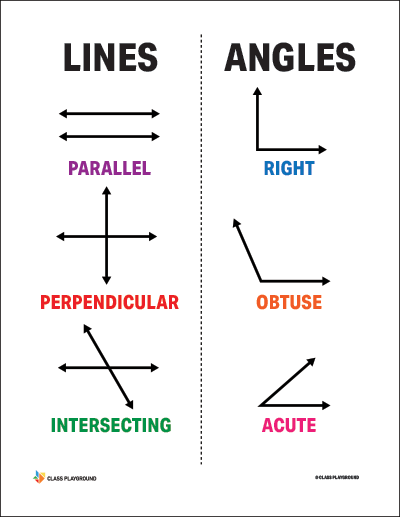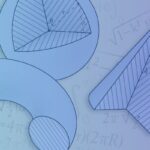Welcome, to this online guide to Euclidean Geometry, produced by In2infinity, and written by Sunil Jenkar.
In this section, we will explore the very beginnings of geometry. We will begin with some definitions, then discuss the first few results as laid out originally by Euclid, and then finally finish with listing some of the most elementary results of geometry.
Definitions
Straight Line – A line such that any part placed with its ends on any other part must lie wholly in the line is called a straight line.
Curve Line – A line no part of which is straight is called a curve line, or simply a curve.
Broken Line – A line made up of two or more different straight lines is called a broken line.
Parallel Lines – Parallel straight lines are straight lines which, being in the same plane and being produced indefinitely in both directions, do not meet one another in either direction.
Equality of Lines – Two straight-line segments that can be placed one upon the other so that their extremities coincide are said to be equal.
Rectilinear Figure – A plane figure formed by a broken line is called a rectilinear figure.
Curvilinear Figure – A plane figure formed by a curve line is called a curvilinear figure. Some curvilinear figures are surfaces bounded by curves and others are the curves themselves.
Angle – The opening between two straight lines drawn from the same point is called an angle. The two lines are called the sides of the angle, and the point of meeting is called the vertex.
Size of Angle – The size of an angle depends upon the amount of turning necessary to bring one side into the position of the other.
Equality of Angles – Two angles that can be placed one upon the other so that their vertices coincide and the sides of one lie along the sides of the other are said to be equal.
Bisector – A point, a line, or a plane that divides a geometric magnitude into two equal parts is called a bisector of the magnitude.
Adjacent Angles – Two angles that have the same vertex and a common side between them are called adjacent angles.
Right Angle – When one straight line meets another straight line and makes the adjacent angles equal, each angle is called a right angle.
Perpendicular – A straight line making a right angle with another straight line is said to be perpendicular to it.
Circle – A closed curve lying in a plane, and such that all of its points are equally distant from a fixed point in the plane, is called a circle. The length of the circle is called the circumference. The point from which all points on the circle are equally distant is the center. Any portion of a circle is an arc. A straight line from the center to the circle is a radius. A straight line through the center, terminated at each end by the circle, is a diameter.
Straight Angle – When the sides of an angle extend in opposite directions, so as to be in the same straight line, the angle is called a straight angle.
Right Angle and Straight Angle – It follows from the definition of right angle that a right angle is half of a straight angle. In like manner, it follows that a straight angle equals twice a right angle.
Acute Angle – An angle less than a right angle is called an acute angle.
Obtuse Angle – An angle greater than a right angle and less than a straight angle is called an obtuse angle.
Reflex Angle – An angle greater than a straight angle and less than two straight angles is called a reflex angle.
Oblique Angles – Acute angles and obtuse angles are called oblique angles. The sides of oblique angles are said to be oblique to each other, and are called oblique lines. Evidently if we bisect a straight angle, we form two right angles; if we bisect a right angle or an obtuse angle, we form two acute angles; if we bisect a reflex angle, we form two obtuse angles.
Perigon- The whole angular space in a plane about a point is called a perigon. It therefore follows that a perigon equals the sum of two straight angles or the sum of four right angles.
Complements, Supplements, and Conjugates – If the sum of two angles is a right angle, each angle is called the complement of the other. If the sum of two angles is a straight angle, each angle is called the supplement of the other. If the sum of two angles is a perigon, each angle is called the conjugate of the other.
Properties of Supplementary Angles
It is sufficiently evident to be taken without proof that:
- The two adjacent angles which one straight line makes with another are together equal to a straight angle.
- If the sum of two adjacent angles is a straight angle, their exterior sides are in the same straight line.
Vertical Angles – When two angles have the same vertex, and the sides of the one are prolongations of the sides of the other, those angles are called vertical angles.
Postulate – In geometry a geometric statement admitted without proof to be true is called a postulate. For example, it is so evident that all straight angles are equal, that this statement is a postulate. It is also evident that a straight line may be drawn and that a circle may be described, and these statements are therefore postulates of geometry. Axioms are therefore general mathematical assumptions, while geometric postulates are the assumptions peculiar to geometry. Postulates and axioms are the assumptions upon which the whole science of mathematics rests.
Theorem – A statement to be proved is called a theorem.
Problem – A construction to be made so that it shall satisfy certain given conditions is called a problem.
Proposition – A statement of a theorem to be proved or a problem to be solved is called a proposition. In geometry, therefore, a proposition is either a theorem or a problem.
Corollary – A truth that follows from another with little or no proof is called a corollary.
Euclid’s Propositions
Before proceeding to our relatively modern introduction to the rudimentary results in geometry, it will be a good idea to explore how Euclid originally begins his exposition. In this section, we will explore the first three propositions of Euclid to get a snapshot of how geometric deductive logic works and the subject unfolds from its axiomatic roots.

Proposition 1
“On a given finite straight line to construct an equilateral triangle”.
The construction goes as follows:
- Given segment AB.
- Given centre A and distance equal to the length of AB, construct circle c1.
(This is justified by Postulate 3.)
- Given centre B and distance equal to the length of BA, construct circle c2.
(This is justified by Postulate 3.)
- Let C be a point of intersection of circles c1 and c2.
- Construct segments from A to C, from C to B, and from B to A.
(This is justified by Postulate 1.)
- Since AC and AB are radii of circle c1, and CB and AB are radii of c2, then AC and CB are both equal to AB and, thus, must be equal to one another.
(This is justified by the first Common Notion.)
- By definition, then, triangle ABC is equilateral.

This proposition is a very pleasant choice for the first proposition in the Elements. The construction of the triangle is clear, and the proof that it is an equilateral triangle is evident. Of course, there are two choices for the point C, but either one will do. This proof is a beautiful exposition of deductive logic and an almost perfect example of a well-written mathematical argument. Euclid takes care to justify the steps in the construction in terms of the initial set of postulates and common notions.
Proposition 2
“To place a straight line equal to a given straight line with one end at a given point.”
Let A be the given point, and BC the given straight line.
It is required to place a straight line equal to the given straight line BC with one end at the point A.
Join the straight line AB from the point A to the point B, and construct the equilateral triangle DAB on it. (Justified by proposition 1)
Produce the straight lines AE and BF in a straight line with DA and DB. Describe the circle CGH with centre B and radius BC, and again, describe the circle GKL with centre D and radius DG. (Justified by postulate 3)
Since the point B is the centre of the circle CGH, therefore BC equals BG. Again, since the point D is the centre of the circle GKL, therefore DL equals DG.
And in these DA equals DB, therefore the remainder AL equals the remainder BG.
But BC was also proved equal to BG, therefore each of the straight lines AL and BC equals BG. And things which equal the same thing also equal one another, therefore AL also equals BC.
Therefore, the straight line AL equal to the given straight line BC has been placed with one end at the given point A.

This is a very clever construction to solve what seems to be a simple problem. One would like simply to slide the line BC along so that one end coincides with the point A. But there is no motion in the geometry of Euclid. The only basic constructions that Euclid allows, are those described in Postulates 1, 2, and 3. Euclid then builds new constructions (such as the one in this proposition) out of previously described constructions. So at this point, the only constructions available are those of the three postulates and the construction in proposition 1 and Euclid uses all four here.
Another, different, expectation is that one might use a compass to transfer the distance BC over to the point A. It is clear from Euclid’s use of postulate 3 that the point to be used for the centre and a point that will be on the circumference must be constructed before applying the postulate; postulate 3 is not used to transfer distance. Sometimes postulate 3 is likened to a collapsing compass, that is, when the compass is lifted off the drawing surface, it collapses.
It could well be that in some earlier Greek geometric theory abstracted compasses that could transfer distances. If that speculation is correct, then this proposition would be a late addition to the theory. The construction of the proposition allows a weaker postulate (namely postulate 3) to be assumed.
Proposition 3
“To cut off from the greater of two given unequal straight lines a straight line equal to the less.”
Let AB and C be the two given unequal straight lines, and let AB be the greater of them.
It is required to cut off from AB the greater, a straight line equal to C the less.
Place AD at the point A equal to the straight line C, and describe the circle DEF with centre A and radius AD.
Now, since the point A is the centre of the circle DEF, therefore AE equals AD.
But C also equals AD, therefore each of the straight lines AE and C equals AD, so that AE also equals C.
Therefore, given the two straight lines AB and C, AE has been cut off from AB the greater equal to C the less.

Now it is clear that the purpose of Proposition 2 is to effect the construction in this proposition.This proposition begins the geometric arithmetic of lines. Explicitly, it allows lines to be subtracted, but it can also be used to compare lines for equality and to add lines, that is, one line can be placed alongside another to determine if they are equal, or if not, which is greater.
Lines & Angles
Lines and angles are among the most basic elements of geometry. All geometric figures either constitute of or can be understood through properties of lines and angles. Some elementary results about lines and angles are given in the following section. These results can be deduced from the first principles with little logic.
Basic Line & Angle Theorems
- If a straight line stands on a straight line, then it makes either two right angles or angles whose sum equals two right angles.
- If with any straight line, and at a point on it, two straight lines not lying on the same side make the sum of the adjacent angles equal to two right angles, then the two straight lines are in a straight line with one another.
- If two straight lines cut one another, then they make the vertically opposite angles equal to one another.
Corollary: If two straight lines cut one another, then they will make the angles at the point of section equal to four right angles. When two parallel lines are cut by a third line (called transversal), it creates eight angles (four with each line). These angles can be made into pairs of angles which have special names.
Corresponding Angles
When two lines are crossed by another line (which is called the Transversal), the angles in matching corners are called corresponding angles.
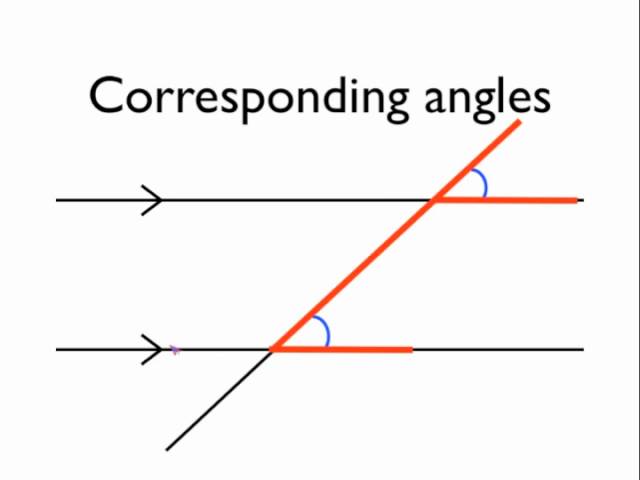
Alternate Interior Angles
The angles are positioned at the inner corners of the intersections and lie on opposite sides of the transversal.

Alternate Exterior Angles
Alternate exterior angles are the pair of angles that lie on the outer side of the two parallel lines but on either side of the transversal line.
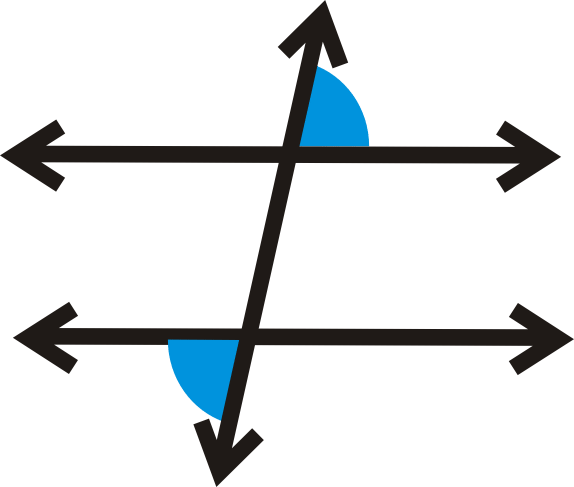
Consecutive interior angles
Consecutive interior angles lie inside on the same side of a transversal.
Consecutive Exterior Angles
Consecutive exterior angles lie outside on the same side of a transversal.
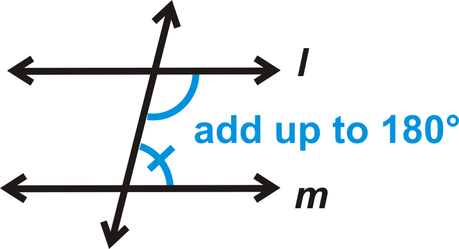
When two parallel lines are cut by a transversal, then:
- Pairs of corresponding angles are equal.
- Pairs of alternate interior angles are equal.
- Pairs of alternate exterior angles are equal.
- Pairs of consecutive interior angles add up to 180 degrees (or a straight angle).
- Pairs of consecutive exterior angles add up to 180 degrees (or a straight angle).
Conversely, If any of the above conditions are true, then the two lines can be said to be parallel.
As we have already seen how Euclid derives his results from axioms and then further results from previously established results and so on, similarly these elementary results that we have just discussed, form the basis to understand more complex ideas which we will discuss in the next section about polygons.
Explore more
geometric principles
This post is part of our Guide to Euclidean Geometry. You can explore more or return to the index page to follow the series in sequential order.
Up Next

The Vesica Piscis
The Vesica Piscis, derived from overlaying two circles with equal diameters, has captivated countless cultures…

